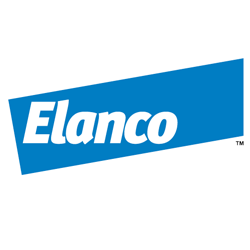Vaccination of shelter dogs and puppies
Increased opportunities for disease exposure and transmission, heightened animal stress, and high population turnover rates contribute to an elevated risk for infectious disease in dogs housed in high-density environments such as animal shelters. In addition, dogs entering shelters are less likely to be immune against CPV and CDV than owned dogs.102–104 Of equal importance, infectious diseases are detrimental for individual animals, entire shelter populations, and community animals if an outbreak occurs. These increased environmental and patient risk factors inherent to shelter populations warrant more stringent vaccination requirements than those for owned dogs. Accordingly, all dogs, unless severely ill and unable to be housed within the shelter, should be vaccinated upon shelter entry. MLV vaccines should be used (as opposed to inactivated vaccines) owing to the possibility of more rapid onset of immunity. The DA2PP vaccination schedule in puppies should be started at a younger age, have shorter intervals between vaccinations, and end at an older age than that in owned puppies.
Core vaccines for dogs in shelter environments include parenteral MLV DA2PP, IN Bb and CPIV, and parenteral rabies. Additional high-density or high-risk environments, including foster homes, foster-based rescues, breeding facilities, sanctuaries, boarding kennels, and pet stores, should consider following the same vaccination protocol.
Unless sufficient and reliable documentation of current vaccination status is presented, all dogs and puppies 4 wk of age and older should receive an MLV DA2PP vaccine at or before shelter entry and receive boosters at 2 to 3 wk intervals until they reach 18–20 wk of age. In addition, exposure to infectious disease should be physically avoided for puppies, ideally through placement in foster care until adoption or upon reaching 18–20 wk of age.
All dogs older than 18–20 wk of age at time of entry should receive an initial dose of MLV DA2PP vaccine followed by a booster vaccine 2–3 wk later, administered either within the shelter, if the dog remains in care, or by their owner’s veterinarian after adoption. When dogs are housed in shelters for prolonged periods of time, they should receive booster vaccinations as recommended for owned dogs.
All puppies and dogs older than 3 wk of age should receive an IN Bb and CPIV vaccine with or without CAV-2 at or before entry to mitigate CIRD. Although not documented in dogs, IN administration probably stimulates a local, rapid innate (interferon) response in addition to mucosal IgA. In puppies, this immune response avoids interference from maternal antibodies.89,105,106 Single-component mucosal vaccines that contain only Bb should be avoided because dogs that are deemed at risk for Bb should be vaccinated against CPIV as well. Injectable Bb vaccines should be avoided in shelter environments owing to a delayed onset of immunity, including little stimulation of the local immune responses in the upper respiratory tract. This leads to reduced efficacy in limiting CIRD compared with IN vaccines. Oral or injectable single-component Bb vaccines are only recommended when it is not possible to administer a two-way IN vaccine.
A single dose of a rabies vaccine should be administered parenterally to all dogs older than 12 wk of age before release from the shelter. Rabies vaccination is not required upon shelter entry, as risk of exposure to rabies within the shelter environment is limited. However, if a long-term stay is anticipated, rabies vaccine should be administered on entry with the other core vaccines. Local legal mandates regarding the level of veterinary supervision required for rabies vaccination should be considered when developing shelter protocols. Rabies vaccination is acceptable even if additional vaccines may have been administered to the patient within the past 2 wk. Conclusive evidence is lacking that concurrent vaccination against multiple pathogens will impair the expected immune response to any individual component. Ensuring shelter dogs are vaccinated against rabies upon release from the shelter provides a significant public health benefit and outweighs any theoretical risk of vaccine interference.
Routine vaccination of shelter-housed dogs against Leptospira, B burgdorferi (Lyme disease), and canine influenza virus (CIV; H3N8 or H3N2 serotypes) is not recommended because these infections usually pose a minimal risk within the shelter environment. However, local endemic or epizootic infections, such as in CIV outbreaks with potential for shelter exposure, as well as available shelter resources, legal requirements, and the risks and benefits of vaccines should be considered if adopting these noncore vaccinations in a shelter protocol.107 Shelters should advise owners to discuss an individually tailored vaccination program with their veterinarian after adoption.
Pregnancy and mild illness or injury are not contraindications to administering core vaccines (CDV, CPV, CAV-2) to shelterhoused dogs. The overall benefits of MLV vaccination in a high-risk environment outweigh the potential risks posed by vaccination.108 If a dog is mildly ill when vaccinated on entry to the shelter and the immune response to vaccination is of concern, then boostering the MLV DA2PP vaccine in 2–3 wk (or after the animal has recovered) will likely provide additional protection. Shelters that vaccinate all animals on entry provide optimum herd immunity within their population. Conversely, shelters that do not vaccinate on entry or do not vaccinate all dogs are at higher risk for an infectious disease outbreak.109,110







